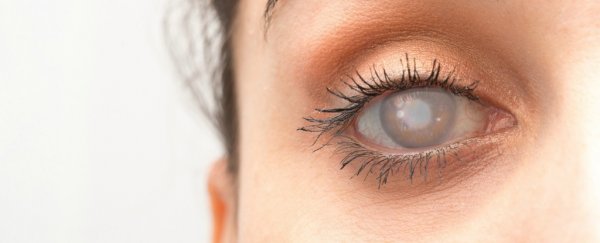A Food and Drug Administration advisory committee unanimously endorsed an experimental gene therapy Thursday for patients with a rare kind of hereditary blindness, setting the stage for a historic approval.
If the agency agrees with the recommendation, the one-time treatment would be the first gene therapy cleared in the United States for an inherited disorder.
Made by Philadelphia-based Spark Therapeutics, the therapy involves injecting a healthy version of the RPE65 gene - responsible for making a protein needed for sight - into the eyes of patients who have defective copies of the gene.
The treatment does not give patients perfect vision but does produce substantial improvements, researchers said.
The FDA has approved only one treatment that it calls gene therapy - Kymriah, which is used for childhood leukaemia. That approach involves extracting immune cells, genetically altering them in the lab and returning them to the patient.
By contrast, Luxturna, the Spark product, represents what is thought of as true gene therapy, in which a functional gene does the job of a defective one. About 1,000 to 2,000 people in the United States have inherited retinal diseases caused by a mutated RPE65 gene.
The company has not provided an estimated cost for the treatment, but it's likely to be steep. Wall Street analysts are predicting a price of US$750,000 to US$1 million for both eyes.
That could fuel an already heated debate over the rising cost of pharmaceuticals.
Children with the dysfunctional gene often are diagnosed at an early age with disorders such as Leber congenital amaurosis or retinitis pigmentosa.
They have limited vision that typically gets worse over time, resulting in night blindness and a loss of peripheral and central vision. Almost all end up completely blind.
During an all-day committee meeting Thursday, several young people told stories about how the experimental treatment had transformed their lives, allowing them, for the first time, to see stars and their parents' faces, and to go out at night with friends.
A few years ago, "I was at a precipice of losing it all," Katelyn Corey, a 24-year-old Los Angeles resident, told the panel. She was falling far behind in her college work as her vision deteriorated and her world literally darkened.
After getting the gene therapy in 2013, "I was no longer living in a black-and-white film," she said. "I may not have gained normal vision, but I gained all of my independence."
She graduated from college and earned a master's degree in epidemiology.
Corey and others who spoke Thursday acknowledged that their vision is far from 20-20 and that it isn't clear that the improvement will be permanent. Still, the effects have lasted for four years or more, researchers say.
The committee's vote of confidence is a major advance for a field that has struggled for decades to overcome devastating setbacks.
"One of the hopes of the Human Genome Project was to use genes to develop medicines," said Katherine High, president and head of research and development at Spark.
"It has been much more complex than people imagined, but if we can succeed, it means a lot for people with rare inherited diseases."
Hundreds of gene-therapy clinical trials are underway throughout the world, including for haemophilia and Huntington's disease, according to the Alliance for Regenerative Medicine, an industry group.
For retinal diseases alone, there are more than 18 gene-therapy trials underway, according to Stephen Rose, chief research officer at the Foundation Fighting Blindness.
The group financed some of the earlier research for the treatment, whose generic name is voretigene neparvovec.
The FDA isn't required to take the recommendations of its advisory committee, but it usually does. Its deadline for deciding on the Spark treatment is mid-January.
Spark was founded in 2013 based on research and a substantial investment from Children's Hospital of Philadelphia (CHOP). In a pivotal trial involving about 30 patients ages 4 to 44, most patients who received the treatment showed improvement in navigating a novel maze - with obstacles and arrows for directions.
The obstacle course was designed to measure patients' "functional vision", or the ability to handle daily activities in lowlight conditions. The patients didn't see statistically significant gains in "visual acuity" - that is, in reading an eye chart.
During the meeting, researchers showed a video of a 6-year-old patient who, before getting the treatment, bumped into objects on the obstacle course and was unable to complete it quickly.
At age 10, years after being treated, she was able to move through the course easily in seconds.
Christian Guardino, a 17-year-old high school senior from Patchogue, NY, was diagnosed with the disorder when he was less than a year old.
"We literally had to keep all the lights on," said his mother, Elizabeth. "He was going completely blind and he couldn't navigate on his own."
In 2012, Christian, who testified at Thursday's meeting, got the treatment as part of the trial at CHOP and his vision improved immediately. Now, his mother said, he can play sports, go out with friends at night and read books, albeit ones with large print.
Christian describes the change in his life as "incredible." Recently, he competed on NBC's "America's Got Talent," wowing the judges with his powerful voice. He was especially happy, he said, to be able to see the judges so clearly.
Jean Bennett, an ophthalmologist at the University of Pennsylvania who has been involved in the development and testing of the gene therapy, said the treatment allows children to become much more independent.
"They can walk around, play sports," she said.
This article was originally published by Business Insider.
